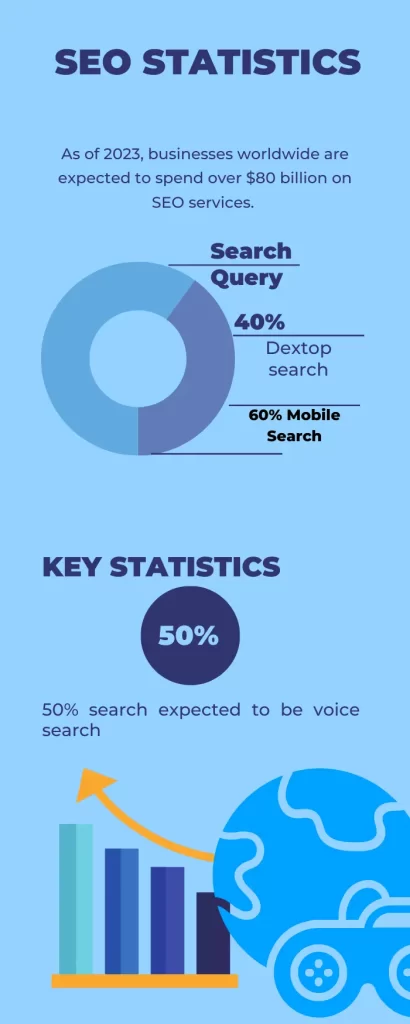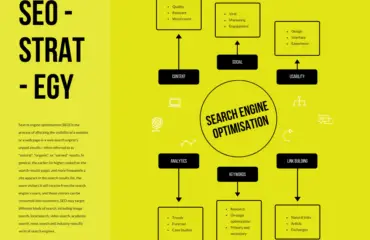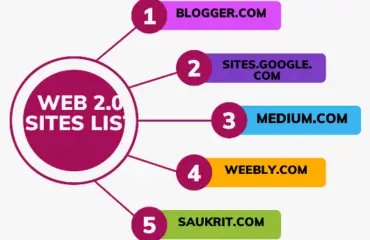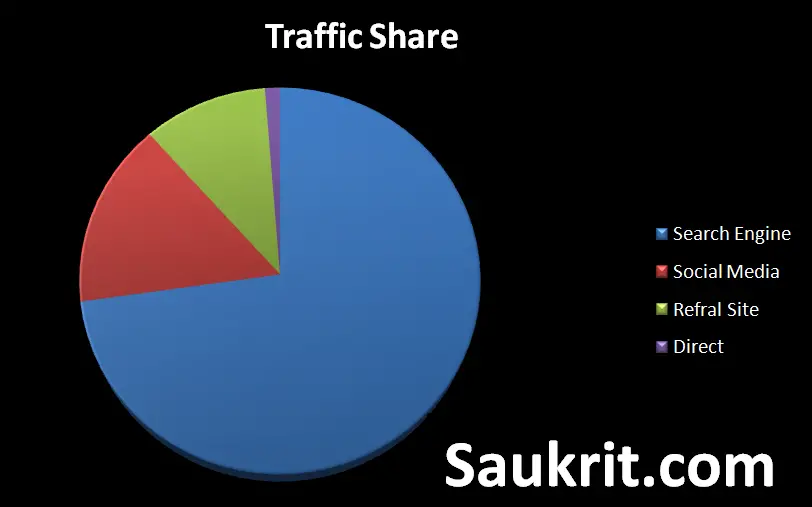As a small business owner in the digital age, understanding the latest SEO statistics for small businesses is crucial.
Search Engine Optimization (SEO) is a key element of your online strategy, ensuring your website ranks highly in search engine results, increases web traffic, and potentially drives sales.
But SEO is more than just a buzzword.
It’s a proven strategy that’s constantly evolving as search engine algorithms change.
To stay competitive, you need to stay updated with the latest SEO trends.
In this comprehensive guide, we’ll explore over 100 of the most relevant SEO statistics that small businesses need to be aware of in 2023.

Importance of SEO for Small Businesses
Before we delve into the statistics, let’s quickly recap why SEO is so important.
friends, 93% of online experiences begin with a search engine, and SEO is the tool that helps your business get found within the billions of websites out there.
It’s not just about visibility, but also about credibility and user experience.
Now, let’s look at the SEO landscape through the lens of the latest statistics.
SEO Industry Statistics
1- Global SEO spending: As of 2023, businesses worldwide are expected to spend over $80 billion on SEO services.
This showcases the high value that companies place on optimizing their online presence.
2- Organic vs paid search: Organic SEO is about 5.66 times better than paid search ads.
Despite this, paid search still has a role in an integrated marketing strategy.
3- SEO vs PPC: 70% of marketers see SEO as more effective than PPC.
SEO delivers more sustainable results in the long term.

Local SEO Statistics
Local SEO helps small businesses become visible to local customers. Here are some key statistics that underscore its importance.
4- Google My Business: Businesses that verify their information with Google My Business are twice as likely to be considered reputable by consumers.
5- Local searches lead to purchases: 78% of location-based mobile searches result in an offline purchase.
6- Online reviews matter: 88% of consumers trust online reviews as much as personal recommendations.
Mobile SEO Statistics
The number of smartphone users worldwide is expected to reach 3.8 billion by 2023, making mobile SEO a must for small businesses.
7- Mobile vs desktop: In 2023, mobile devices are expected to generate over 60% of organic search engine visits.
8- Page speed: As per Google, 53% of mobile site visits are abandoned if pages take longer than 3 seconds to load.
9- Mobile-first indexing: More than 60% of Google’s total index of the web is based on mobile-first indexing.
Voice Search SEO Statistics
Voice search is becoming increasingly popular, with more people using digital assistants like Alexa, Siri, and Google Assistant.
10- By 2023, 50% of all searches are expected to be voice searches.
11- 76% of smart speaker users perform local searches at least weekly, with 53% using them daily.
12- Voice-based shopping is expected to jump to $40 billion in 2023.
Content and SEO Statistics
Quality content is a cornerstone of effective SEO. Here’s why.
13- Companies that blog receive 97% more links to their websites.

14- Long-form content of over 3,000 words gets three times as many backlinks as average-length content.
15- It’s predicted that by 2023, 82% of all internet traffic will be video. Video content can increase organic search traffic by 157%.
User Experience and SEO Statistics
User experience is a crucial aspect of SEO, as search engines prioritize sites that offer a high-quality user experience.
16- A 100-millisecond delay in load time can cause conversion rates to drop by 7%.
17- 85% of people will not continue browsing if a site is not secure. Google also gives preference to HTTPS websites in search results.
18- Pages with a longer load time tend to have higher bounce rates, with 32% more likelihood of bounce when the page load time goes from 1 second to 3 seconds.
Backlink Statistics
Backlinks are a major ranking factor for search engines. Here are some stats to consider.
19- The average web page ranking first on Google has 3,000 backlinks.
20- 65% of marketers agree that link building is the most difficult SEO tactic to perform.
21- Websites with a high number of referring domains tend to rank higher on Google.
SEO Ranking Factors Statistics
Several factors contribute to SEO rankings. Below are some key ones.
22- Google uses over 200 factors in its algorithm for ranking websites, with relevance being one of the most significant ones.
23- The average CTR for a website in the first position on Google’s organic search results is 31.7%.
24- The average dwell time for a top 10 Google result is three minutes and 10 seconds.
E-commerce SEO Statistics
SEO is vital for e-commerce businesses. Here’s why.
25- By 2023, e-commerce sales are projected to account for 22% of global retail sales.
26- 46.7% of US internet users start product searches on Amazon compared to 34.6% who went to Google first.
27- E-commerce pages with video content see an 80% increase in conversions.
Social Media and SEO Statistics
While social signals aren’t a direct ranking factor, they can indirectly influence your SEO efforts.
28- Content with a high number of social shares can get an SEO boost.
29- 52% of online brand discovery happens in public social feeds.
30- Instagram has the potential to generate over 4 billion likes per day, indicating its power in driving engagement.
SEO and Artificial Intelligence (AI) Statistics
Artificial Intelligence (AI) is playing an increasingly significant role in SEO, as search engines use AI to improve their algorithms and provide better search results.
31- Google’s AI algorithm, RankBrain, is the third most important ranking factor for search queries.
32- By 2023, it is estimated that 77% of businesses will have incorporated AI to improve their SEO tactics.
33- 33% of marketers use AI for content personalization, improving user experience and SEO simultaneously.
SEO and User Behaviour Statistics
User behavior data can help search engines understand how users interact with websites and adjust rankings accordingly.
34- Websites ranking first on Google have an average bounce rate of 49%.
35- The average time on site for a top 10 Google result is 2 minutes and 17 seconds.
36- Sites with more direct traffic rank higher on Google. The first-ranking site in Google’s search results receives nearly 42% of all direct traffic.
Image Search SEO Statistics
Image search is another aspect of SEO that is often overlooked but can drive significant traffic to your site.
37- Google Images account for over 20% of the total search volume.
38- Websites that use images effectively see an average increase of 12% in traffic.
39- 30% of all websites use the alt-text attribute incorrectly or not at all, missing out on potential search traffic.
Featured Snippets SEO Statistics
Featured snippets provide direct answers to search queries and appear at the top of Google’s search results.
40- 12.29% of search queries return a featured snippet in the search results.
41- Pages that secure the featured snippet see a click-through rate (CTR) increase of over 114%.
42- 40.7% of all voice search answers came from a featured snippet.
Structured Data and SEO Statistics
Structured data helps search engines better understand your content and can enhance your visibility on SERPs.
43- Only 17% of marketers use Schema markup for SEO, despite its potential benefits.
44- Pages using Schema markup tend to rank four positions higher in search results than pages without markup.
45- 86% of consumers say that product information is essential for their purchase decision.
HTTPS and SEO Statistics
HTTPS is not only a security feature but also a ranking signal for Google.
46- As of 2023, 90% of web pages loaded by Chrome on desktops are over HTTPS.
47- 75% of first-page results on Google are HTTPS.
48- 84% of users would abandon a purchase if data was sent over an insecure connection.
Core Web Vitals and SEO Statistics
Google’s Core Web Vitals is a set of factors that Google considers important in a webpage’s overall user experience.
49- Sites appearing on the first page of Google’s search results have an average load time of less than 2 seconds.
50- Over 85% of mobile pages have good visual stability, one of the aspects of Core Web Vitals.
51- 70% of mobile pages meet the criteria for good interactivity, another Core Web Vitals factor.
SEO for Multilingual Websites Statistics
As the internet reaches more corners of the world, multilingual SEO is a growing field that can help your business tap into new markets.
52- Websites that are localized for specific languages and regions can increase conversion rates by 70%.
53- Over 75% of online consumers speak languages other than English. SEO that targets these languages can tap into a massive potential audience.
54- Only around 12% of websites use hreflang tags correctly, a crucial element of multilingual SEO.
SEO and Conversion Rate Optimization (CRO) Statistics
SEO and CRO are two sides of the same coin: SEO brings traffic to your site, while CRO converts that traffic into customers.
55- Adding CTAs to your Facebook page can increase the click-through rate by 285%.
56- A one-second delay in page load time can lead to a 7% loss in conversions.
57- Companies see a 55% increase in leads when increasing their number of landing pages from 10 to 15.
SEO Tools and Analytics Statistics
A variety of SEO tools and analytics platforms can help you monitor your performance and identify areas for improvement.
58- As of 2023, Google Analytics is used by 56.1% of all websites, making it the most popular analytics tool.
59- 92% of marketers believe that their SEO efforts are improved by the use of SEO tools.
60- 88% of marketers use keyword research tools as part of their SEO strategy.
Video SEO Statistics
Video content is a potent tool for engagement, and optimizing it for search can significantly enhance your visibility.
61- Including a video on your landing page can increase conversions by up to 80%.
62- Videos are 50 times more likely to get organic page ranks in Google than plain text results.
63- 60% of people prefer video platforms to live television, and YouTube is the second most popular search engine after Google.
SEO and Social Media Statistics
Though social media signals don’t directly impact search rankings, a robust social media presence can indirectly boost your SEO.
64- Web pages with the top 10 highest number of social signals appear consistently in top SERPs.
65- As of 2023, over 3.96 billion people use social media worldwide, making it a fertile ground for brand visibility and engagement.
66- Brand mentions on social media can influence the perceived relevance, popularity, and reputation of a website, indirectly affecting its SEO.
Predictive Search and SEO Statistics
With advancements in AI, predictive search is an emerging trend in SEO, where search engines anticipate user needs and provide solutions proactively.
67- Google Discover, a predictive search feature, has over 800 million active users.
68- 33% of marketers are using AI to deliver personalized web experiences that can feed into predictive search results.
69- By 2023, the predictive analytics market is expected to reach $10.95 billion, reflecting its growing importance in marketing and SEO.
Semantic SEO Statistics
As search engines get better at understanding the context of the content, semantic SEO – the practice of writing content that answers a query within a specific context – is becoming more important.
70- 70% of all search queries contain synonyms, misspellings, or variant word orders, making semantic SEO critical.
71- Websites using LSI keywords have seen a 30% increase in organic traffic.
72- With Google’s BERT update, the search engine is now better able to understand the context of words in search queries.
SEO Automation Statistics
SEO automation involves using tools to take care of repetitive SEO tasks, such as technical audits, keyword research, and reporting, allowing you to focus more on strategy.
73- 60% of businesses automate at least part of their SEO activities.
74- SEO automation can save businesses up to 80% of the time they would otherwise spend on manual SEO tasks.
75- 75% of marketers who have used SEO automation tools reported improved search rankings.
SEO Workforce Statistics
Understanding the composition and dynamics of the SEO workforce can give you insights into how to manage your SEO efforts.
76- About 63% of companies perform their SEO in-house, while 37% outsource it to SEO agencies or freelancers.
77- On average, small businesses have two employees working on SEO, while medium-sized businesses have five.
78- Small businesses spend an average of $497 per month on SEO services.
SEO Training and Education Statistics
Training and education in SEO can help businesses stay updated with the latest trends and enhance their SEO strategies.
79- 70% of marketers say that SEO is more effective at driving sales than PPC, but it requires ongoing education due to constant algorithm updates.
80- Over 50% of SEO professionals have taken an SEO course to improve their skills.
81- 61% of marketers believe that SEO is the key to online success and they actively seek new learning resources.
Search Engine Market Share Statistics
Knowing the market share of different search engines can help you tailor your SEO strategy.
82- As of 2023, Google holds 87.35% of the global search engine market share.
83- Bing holds 6.07% of the market share, while Yahoo holds 3.15%.
84- Search engines like DuckDuckGo and Ecosia are gaining popularity due to their focus on privacy and sustainability, holding 2.25% and 0.72% of the market share, respectively.
Future SEO Trends Statistics
Staying ahead of future SEO trends can give businesses a competitive edge.
85- By 2024, it’s predicted that 50% of all online searches will be voice-based.
86- AI is predicted to revolutionize SEO, with 77% of businesses planning to use AI for SEO in the next three years.
87- Google has announced that starting from March 2023, all websites will be crawled and indexed using a mobile-first approach.
Search Intent and SEO Statistics
Understanding search intent, or why people search for what they do, can help you tailor your content to meet your audience’s needs and rank better in search results.
88- Google’s algorithms are increasingly prioritizing search intent over keywords, changing the landscape of SEO.
89- 80% of all search queries are informational, requiring content that educates and informs to rank highly.
90- 50% of search users are more likely to click on a result if it accurately reflects their search intent.
SEO and Content Marketing Statistics
Content is king in SEO. The quality and relevance of your content can significantly affect your search rankings.
91- Companies that blog receive 55% more website visitors and 97% more links to their websites.
92- Long-form content of over 3,000 words gets three times more traffic, four times more shares, and 3.5 times more backlinks than average-length articles.
93- 72% of marketers say relevant content creation is their most effective SEO tactic.
Google Algorithm Updates Statistics
Google’s algorithm updates can change SEO best practices overnight. Understanding these updates can help you stay ahead.
94- Google updates its algorithm hundreds of times a year, but only a few of these updates have a significant impact on search rankings.
95- The BERT update affected 10% of all search queries, emphasizing the importance of natural language processing and search intent.
96- Google’s broad core updates significantly impact search results, affecting many websites across various industries.
Mobile SEO Statistics
With the majority of online searches now performed on mobile devices, mobile SEO has become crucial for any business.
97- Over 60% of Google searches are done via mobile devices.
98- 89% of people are likely to recommend a brand after a positive experience on its mobile site.
99- Since March 2021, Google has switched over to mobile-first indexing, meaning it predominantly uses a website’s mobile version for indexing and ranking.
Local SEO Statistics
For small businesses that serve specific localities, local SEO is essential to attract customers in your area.
100- Businesses that verify their information with Google My Business are twice as likely to be considered reputable by consumers.
101- 46% of all Google searches are looking for local information.
102- 78% of local mobile searches result in offline purchases.
More statistics- Facebook Statistics, Social media statistics, TikTok Statistics, Google Statistics
Data Source- Aherfs, Backlink, search engine journal
Popular Tools By Saukrit: Date of Birth Calculator, Home Loan EMI Calculator, Word Counter








There is a lot of important information on your site Which is very useful
Thanx Samzoon did you seen mobile search and voice search will lead search query in future